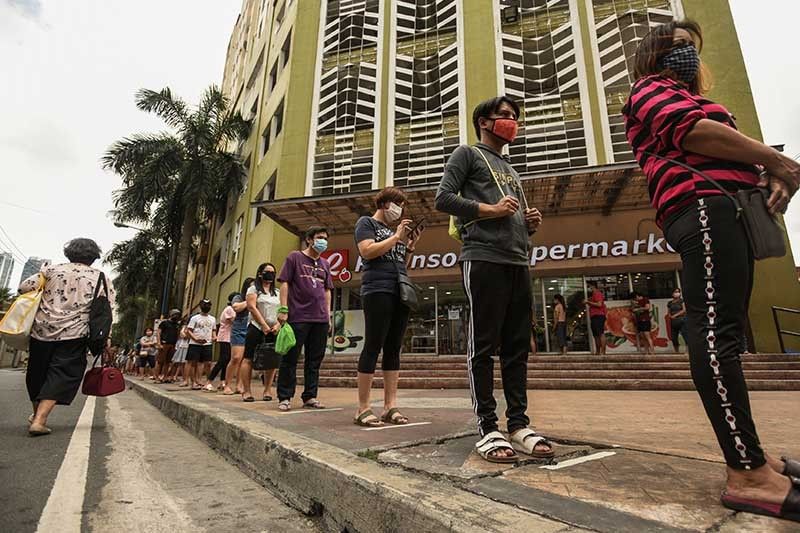How to prevent COVID-19 transmission after quarantine: Doctors share findings

MANILA, Philippines — Even as lockdowns loosen nationwide, the threat of novel coronavirus disease 2019 (COVID-19) remains largely the same, if not graver than ever, pending mass testing in the Philippines and a successful vaccine the world over.
Until next Monday, the following areas are all placed under general community quarantine (GCQ) while the rest of the country has since transitioned to modified GCQ (MGCQ).
- Metro Manila
- Pangasinan province
- Cagayan Valley (Region II)
- Central Luzon (Region III)
- Calabarzon (Region IV-A)
- Central Visayas (Region VII)
- Zamboanga City
- Davao City
- Cebu City
- Mandaue City
Related: What is modified, enhanced, general quarantine? Here's how to tell the difference
Presidential spokesperson Harry Roque on Monday said that quarantines will be reclassified next week with the possibility of "new normal" up next for areas under MGCQ depending on health data.
Whether our respective cities will see GCQ, MGCQ or lifting of quarantine entirely in favor of a “new normal” scenario in the coming weeks or even months, here’s what you need to know to keep yourself and others safe regardless.
Reducing transmission rate
During the "Health Connect: Life Beyond Lockdown" webinar of the Pharmaceutical and Healthcare Association of the Philippines held last week, some of the country's leading doctors shared scientifically-sound advice on how citizens, healthcare workers and other professionals can best prevent COVID-19 spread as we transition further out of quarantine.
There are still no approved cures or available vaccines six months into the coronavirus pandemic. Without these, doctor Rontgene Solante, Fellowship Program chairman of Adult Infectious Disease and Tropical Medicine (AIDTM) at San Lazaro Hospital, said that that social distancing and personal hygiene are the most important preventions that decrease the risk of contact and transmission.
Minimum health standards that will remain even after quarantine include regular handwashing, avoiding crowded places, refraining from touching one’s face, observing good respiratory hygiene (wearing face masks), staying home and self-isolating if not feeling well.
Social distancing
For social distancing, Solante recommended extending the typical one to two meters gap between individuals to two to three meters.
“Distance from one individual is driven by the fact that the most common mode of transmission is through droplet by coughing or by sneezing. But there are small reports that it can be airborne for a few minutes so for you to prevent that, then you have to also extend the distancing. Instead of just one meter, two or three meters may be enough.”
Citing a medical study published just last week, he revealed that physical distancing significantly affects the chance of infection or transmission. The chances are reduced from 12.8% without intervention (less than one-meter distance) to just 2.6% with the proper intervention (one-meter distance or greater).
PPEs
Similarly, wearing face masks reduces the chance of infection or transmission from 17.4% without intervention to only 3.1%.
Use of personal protective equipment (PPE), primarily face masks, are now also recommended universally outside the hospital setting.
Everyone, including the healthy and asymptomatic, must wear masks in public places, high-density communities as well as offices and other workspaces.
Masks must also be worn even at home for those exhibiting symptoms (cough, fever, shortness of breath, sore throat, diarrhea, body aches and pains, headache, conjunctivitis, loss of taste or smell).
Although scarce N-95 face masks offer better protection compared to more common surgical face masks, these should only be reserved and preserved for the hospital setting.
Eye protection, also recommended mainly in the healthcare setting, reduces the chance of infection or transmission from 16% to 5.5%.
Going back to work
Citing a proposed framework for counseling employees about returning to work as published in a May study, Solante said that those with the greatest occupational risk of contracting the virus which causes COVID-19 and those who present the highest risk of death should be advised to consider stopping work.
These are those who have been in contact with people known to have the coronavirus (high occupational risk) and those of older age or middle-age who tend to be more vulnerable (high risk of death).
Meanwhile, those with medium occupational risk (contact with people with uncertain coronavirus strain) but high risk of death or vice versa (middle-age or younger age in contact with people known to have the coronavirus) must be counseled on individual risks and opportunities to mitigate exposure, possibly even considering to stop work.
Everyone else may resume going to work following minimum health standards.



















